
Stalin may or may not have said those words but he was certainly on to something. Revolutions require more than anger. They require symbols, images around which peoples’ thoughts can gather and coalesce so that the abstraction of a million deaths can become a reality.
Shias know this better than most because Shia’ism has only survived through the power of images and stories. Every Muslim can picture the events of Karbala in part because the image of Imam Hussain (RA) and his 72 companions standing firm against the might of Yazid’s army is so potent. It is these images which get revisited every Muharram: the dark and thirsty nights; the martyrdom of Hazrat Qasim, trampled by the horses of Yazid’s army; Hazrat Ali Asghar, the innocent baby pierced by an arrow; Bibi Sakina, crying as her father’s steed returns riderless to the camp; women being led through the bazaars of Damascus with their heads uncovered; Bibi Zainab defiantly lecturing Yazid before his own court.
To these images, we can now add a new tableau: the bodies of 86 people killed on Alamdaar road, their coffins placed on the open street, their mourning families refusing to bury the bodies till they get justice.
Even the name ‘Alamdaar’ is important here. The word ‘Alam’ refers to the ceremonial flag or standard carried out into battle. Alamdaar means the “standard-bearer” or the person given the responsibility of carrying the flag into battle. As in all armies, the position of flag-bearer was one of incredible honour. In the case of Imam Hussain, the ‘Alamdaar’ was Hazrat Abbas, his half-brother.
Shias believe that Hazrat Abbas died while trying to get water for Bibi Sakina, Imam Hussain’s young daughter and they revere his memory as the most faithful and courageous of Imam Hussain’s companions. That is why Shia processions always have a black flag carried in them, because that flag is a symbol of the flag of Imam Hussain and, by extension, a symbol of Hazrat Abbas (the Alamdaar). The protest on Alamdaar Road therefore not only honours the martyrs of January 10 but also references the martyrs of the past. At least for Shias, this protest is a generational call to arms. All of Shia history stems from a single deliberate act of martyrdom in the face of overwhelming brutal force. By refusing to bury their dead, the Shias of Alamdaar Road have connected their suffering with the martyrs whom they revere and the effect is profound. I like to think of myself as about as sceptical as is humanly possible. But the mourners of Alamdaar Road have managed to trump all of that.
The importance of the Alamdaar Road protests doesn’t lie in their effect on other Shias though, but on the larger national consciousness. By refusing to bury their dead, the Shias of Quetta have managed — for once — to break through our national apathy. It is a part of our culture to bury our dead immediately, just like it is a part of our culture (especially in Balochistan) for women to not be seen in public. When the ordinary Pakistani turns on his TV and sees a community united in grief, when he sees row upon row of grieving women refusing to bury and yet simultaneously honouring the serried ranks of their martyrs, that Pakistani understands in a more visceral way than ever before that something has gone fundamentally and horribly wrong in the Land of the Pure.
Please note that I am making no prediction that this massacre marks a turning point in the life of this country. More than 400 Shias were killed in sectarian killings last year and this year looks set to eclipse that mark. But, there are some encouraging signs.
The first encouraging sign is the decision by Imran Khan to not only go and participate in the protests but to unequivocally condemn the Lashkar-e-Jhangvi. This simple act of courage completely escaped not only the PPP, which remained mumbling and fumbling at the centre, but also the PML-N. Lest we forget, both parties are equally complicit in the murder of Shias. The PPP is responsible because it has chosen to pursue corruption at any expense while not giving a damn about issue of governance and security. The PML-N is responsible because it has taken the lead role in the ‘mainstreaming of hate’ by entering into electoral alliances with parties openly identified with sectarian hate. A third responsible party is the army. For at least the past two decades, the faujis have chosen to act through militant proxies for the sake of supposedly greater strategic gains while turning a blind eye to the sectarian havoc spread by those proxies. And as for the religious parties, the less said about them the better.
The second encouraging sign is the spontaneous appearance of protests across the country. From Quetta to Karachi to Islamabad to Lahore, people have been gathering. At the beginning, the protests were small. But they are continuing. And they are spreading.
You may say that a few hundred or even a few thousand protesters will have no effect. But the important aspect of the protests is that they expose our political parties. It is an open secret that the PML-N has been flirting with sectarian parties. Till date, that flirtation was justified on practical grounds. Trust us, was the argument: once we get power at the national level, then we’ll take on the killers. That hypocrisy now stands exposed. Whether or not the hypocrisy ends is up to the PML-N. But let me tell the Sharif brothers that everybody is now watching a lot more closely than before.
Popular movements are about an idea catching fire in the minds of the masses. Two years ago, a fruit-seller in Tunisia set the entire Arab World on fire when he burnt himself alive in protest. I don’t know if the martyrs of Alamdaar Road will change the course of this country. But along with other Pakistanis, I stand with my head bowed in grief at their sacrifice. Dear God, let it not be in vain.
Published in The Express Tribune, January 15th, 2013.
COMMENTS (39)
Comments are moderated and generally will be posted if they are on-topic and not abusive.
For more information, please see our Comments FAQ












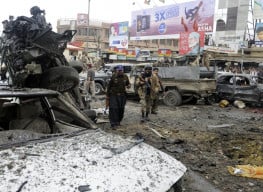
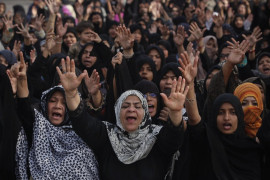

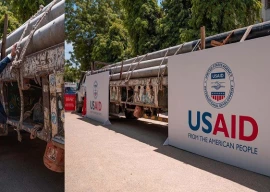
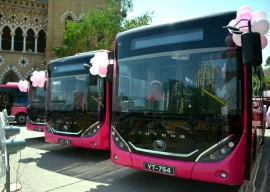
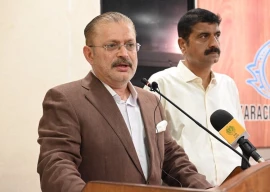
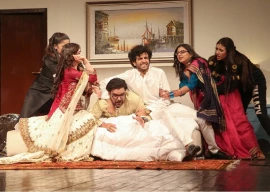
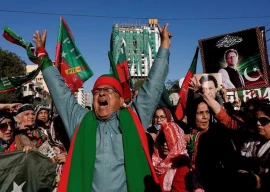


















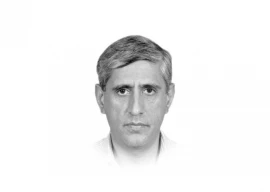

I couldn't agree more with you. Hats off. I hope this changes the course of action in Pakistan positively. Fingers crossed.
Dear Mr. Faisal,
U are absolutely right about PPP, PMLN and army..... But what should shia do..... They are patriotic people,,,, can't stand against army..... but at least should reject PPP and PMLN in coming election......
A single death is a tragedy. A million deaths is a statistic.
Faisal:
You are the man!!! This is nothing less than Jihad with Pen.
I am a Sunni and ashamed on the Silence of First of all Sunni Scholars, then religious parties and then the other political parties.
As for Army, what can I say... These are the brain childs of them.
Keep up the good work!
The PPP is responsible because it has chosen to pursue corruption at any expense while not giving a damn about issue of governance and security. The PML-N is responsible because it has taken the lead role in the ‘mainstreaming of hate’ by entering into electoral alliances with parties openly identified with sectarian hate. A third responsible party is the army. For at least the past two decades, the faujis have chosen to act through militant proxies for the sake of supposedly greater strategic gains while turning a blind eye to the sectarian havoc spread by those proxies. And as for the religious parties, the less said about them the better. The second encouraging sign is the spontaneous appearance of protests across the country. From Quetta to Karachi to Islamabad to Lahore, people have been gathering. At the beginning, the protests were small. But they are continuing. And they are spreading.
This is to all my dear brothers and sisters, look I am a sunni Muslim but tell u the fact it was my worst day of life, full of grief and sorrow when the incident of blasts took place. I was extremely depressed, and my blood pressure arouse to tear them apart in million pieces who have done this un human, cowardly act. To me its immaterial, who is shia and sunni it all ends and should end, after all ham sab ka Rab to Allah Hai and we bow to him. Allah hum sab ko itefaq de aur dushman to tabah kare. Ameen. thx
Well written article. I think the decision of not burying the loved ones is the extreme of patience. If the nation will not awake after that, the dark future is waiting for Us.
When a person dies , the body is then a trust (amanat) that needs to be returned to the Maker asap. The fact that the burial was withheld implies the departing souls had a mission to their Hazara community and this is a tremendous sacrifice on the part of the community to defer the burial and protest the injustice in these extreme circumstances.
Powerful and thought provoking - on the brink of tears. Thanks Feisal
It was a good article in the sense that it highlighted PML N's hypocrisy. It has been involved with many such organizations and its silence on the matter confirmed that. However, the real culprit is the Chief Justice who not once took notice of the sectarian killings.
Feisal sahab, very well written! but somehow you forgot to mention the lack of responsibility on the SC's part.
Feisal sahab! well writtern, but you forgot to mention the lack of responsibility on the SC's part.
Another great write up. What we are witnessing is a realisation by the people that power actually lies in their hands and also the forward role being played by women is something to cheer about.
For us every land is Karabala and every day is Ashura!!
thank you for a brilliant write up.
@Shabbar Rizvi
Enough has been said in response to your comment which you made claiming yourself a Shia. Which your suggestions makes highly dubious. I just want to add that I am a liberal agnostic of Shia origin. But when it comes to mass commemoration of Karbala (Azadari) please note that Azadari is Shiite and Siite is Azadari. It can’t be forsaken for any reason. It will go on, no matter how many of us die, no matter how many!
You are perhaps the only columnist who has raised his fingers at the army, the real culprit behind this massacre. Great article!
@Shabbar Rizvi: Brother you may be rational in your opinion but when it comes to saving the faith...emotions and devotion take front seat because rationality may save your life but it wont save your soul. "Sher ki aik din ki zindagi geedar ki sau sall ki zindagi se behtar hai"
@Falcon: While I am not seeing what you are seeing, I hope that you are right.
Please also acknowledge that Sunni's and Shia's alike held mass gatherings and protests for their Hazara brothers and sisters.
Balanced piece of writing. To blame the PPP is not fair because there is a coalition government. It is failure of the provincial government not the PPP as a political party. It is a cursory analysis.The forces who are fanning and fueling violence against shias reside somewhere else. Only their stooges are executing their agenda here.
(Shias don’t need to be at a jaloos for them to killed)
They can be killed going to office, sitting in shop / clinic or just praying inside mosques. Such instances are too numerous to be recounted here.
My solution is very simple. Gather heads of all religious parties, sectarian organizations, militant wings etc and ask them to state on oath on Holy Quran that they believe killers of religious minorities are Wajab ul Qatal and deserve HELL. Anyone indulging in ifs and buts should be shot on spot. How can you let anyone live who does not believe in right to life for others.
Yes, the name Alamdar road is symbolic. Like Husain a.s. and Karbala,as the tragedy unfolded,it became a rallying symbol for people of all faiths and across continents.Let this unity prevail even after the 86 bodies are lowered into eternal rest.There is only one struggle---that between right and wrong, between justice and tyranny.As the writer points out the faujis are to be blamed too.Why then the main demand of the protesters asking that the army be asked to take control?
@Falcon: (National anger on Malala’s attack, Shahzeb’s murder, and this massacre of Hazara Shias all within few months shows that we are heading for a very hopeful trajectory and we have passed our worst inflection point)
Aapke Moon Mein Ghee Shakar.
They attacked the kids at a snooker club. Shias don't need to be at a jaloos for them to kill. These cowards that brainwash idiots don't need excuses.
The longer you wait to fight injustice the bigger the sacrifice you will need to make. Imam Hussain a.s.
That quote is for you Shabbar.
@Falcon: within few months shows that we are heading for a very hopeful trajectory and we have passed our worst inflection point. Worst infection poit without touching majority which is no way near to the point of realisation of the real evil.Mullah has plagued this nation with hatred yet majority is bussy bashing politicians.Mullah is very cunning and knows how to divert attention of public from reall issue.This is begining and it will not end without taking its toll on majority sects..
@Shabbar Rizvi: Shabbar Betay, you can go home and hide. But What if they come after you? smart option is to come out and fight this tyranny and opression faced by Pakistanis.
Nice article, show a reality and each one must need to read. Regards
Even in death we are not free says Shia community by their stance.
Hopefully Shia stance touches every fiber of PAK and make PAK retrospect of their apathy towards others.
Well written. I would also add that there is a pattern at work. National anger on Malala's attack, Shahzeb's murder, and this massacre of Hazara Shias all within few months shows that we are heading for a very hopeful trajectory and we have passed our worst inflection point.
Let us all pray for the deceased and hope their families find peace! Let us not forget, this is not the time to play politics but that does not mean we should not appreciate the noble effort of Imran Khan, MQM and other political parties. Most important and immediate need is for a targeted operation against LEJ.SSP and all other paraphernalia related to these Abu Jahils. There can be no forgiveness nor can we lose time in seeking justice, too much blood has been shed, too many houses have been destroyed, this country and its people have suffered enough.
PPP, the most repulsive, power hungry party on this planet!
I am speechless and heartbroken at the recent genocide and targeted killings of over 100 innocent civilians. I can understand the disappointment with the PPP but these same killers have killed many PPP leaders starting ZAB, BB, Taseer, Bhatti and the list goes on. These terrorists have only made ANP, PPP, nationalists, secular, democratic liberals, minorities, women and Shia their target. Not a single rightwing leader and party has been attacked by these terrorists. We should not take the deaths of hundreds of ANP and PPP workers for granted. Their only crime was they followed secular policies. How many more murders would it take for the rightwing parties to come out and condemn these acts of terrorism at the name of religion?
@Shabbar Rizvi:
It's about having faith, keeping it strong. No one can stop me from going to mass religious gatherings if I want to, killers on the loose or not. This is exactly what anti-Shia groups want us to do. Stop gathering together, stop holding majalis etc. Why give in? :)
Beautifully said feisal.
By naming LeJ and visiting Shias, Imran has earned the respect of minorities and minor sects; all my Shia friends and colleagues have started reconsidering their support for PPP
You made me cry. I can not stop my tears. God bless you dear author and may show the path of sanity to our country. I am a Pakistani Shia, having PhD in computer science and working in a European country I always think about returning back but my father named me with an explicit Shia colour so I always postpone my plans. May things go in the way we all hope for, may I and many others like me return back to the country. A frighted Shia
This is the first article that you have written (very) well.
I am a shia! But I request all shias to please stop holding mass religious gatherings! When vicious animals are out there to get you and kill you indiscriminately why are we offering ourselves to them for target practice?